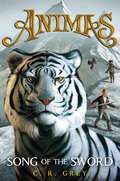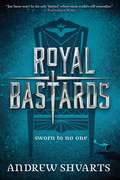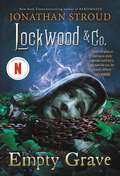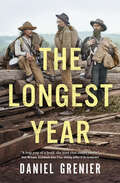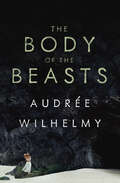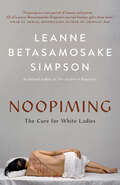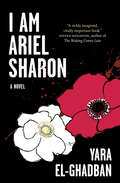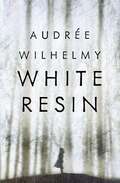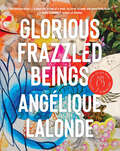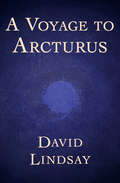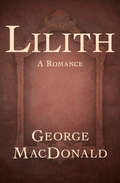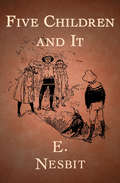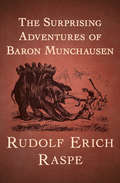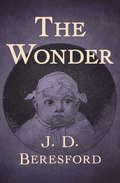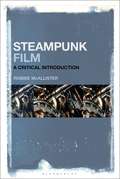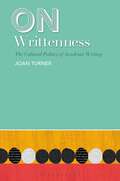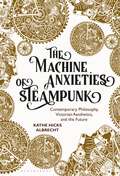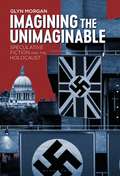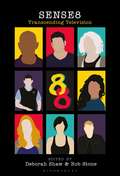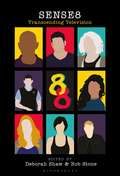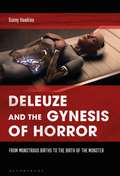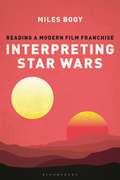- Table View
- List View
Song of the Sword (Animas #3)
by C. R. GreyAn ebook exclusive! After her defeat at the Progress Fair, Viviana's determined to return, and this time, she's building an army. With the Dominae strengthening, Tremelo, Bailey, and the rest of their friends work feverishly to develop a device that could overpower Dominance once and for all. But when Tremelo is kidnapped, Bailey must take the lead in the fight to protect the bond. As they prepare for battle, Bailey uncovers a legend: a sword with the power to defeat Viviana is hidden somewhere in the kingdom. On an epic journey across Aldermere in search of the sword, the friends unravel startling secrets about the bond, Bailey's past, and each other. In this thrilling conclusion to the Animas trilogy, Bailey and his friends must risk everything to save the bond they treasure and restore the rightful king to the throne of Aldermere.
Royal Bastards (Royal Bastards Ser. #1)
by Andrew ShvartsTilla's father loved her as a child, but cast her aside when he had trueborn children. She spends her days exploring long-forgotten tunnels under the castle and nights drinking with the servants. Tilla longs to sit by her father's side, instead she sits with the other bastards. Then, at a feast honoring a visiting princess, the royal shocks everyone by choosing to sit at the Bastards' Table. Before she knows it, Tilla is leading the princess on a late-night escapade. But rebellion is brewing - the bastards band together and flee, realizing only they have the power to prevent civil war.
The Empty Grave (Lockwood & Co. #5)
by Jonathan StroudFive months after the events in THE CREEPING SHADOW, we join Lockwood, Lucy, George, Holly, and their associate Quill Kipps on a perilous night mission: they have broken into the booby-trapped Fittes Mausoleum, where the body of the legendary psychic heroine Marissa Fittes lies. Or does it? This is just one of the many questions to be answered in Book 5 of the Lockwood & Co. series. Will Lockwood ever reveal more about his family's past to Lucy? Will their trip to the Other Side leave Lucy and Lockwood forever changed? Will Penelope Fittes succeed in shutting down their agency forever? The young agents must survive attacks from foes both spectral and human before they can take on their greatest enemy in a climactic and chaotic battle. And to prevail they will have to rely on help from some surprising--and shadowy--allies. Jonathan Stroud once again delivers a rousing adventure full of danger, laughs, twists, and frights. The revelations will send readers back to Book 1 to start the series all over again. Exclusive to this paperback edition: a Lockwood & Co. short story, "The Dagger in the Desk," and an illustrated ghost guide.
The Longest Year
by Daniel GrenierF. Scott Fitzgerald’s “The Curious Case of Benjamin Button” meets Junot Diaz’s The Brief Wondrous Life of Oscar Wao in Daniel Grenier’s epic novel, which tells the story of a boy who ages only one out of every four years.There’s something extraordinary about Thomas Langlois.Thomas is a young boy growing up in Chattanooga, Tennessee, with a French-Canadian father, Albert, and an American mother, Laura. But beyond the fact that he lives between two cultures and languages, there’s something else about Thomas that sets him apart: he was born on February 29.Before Albert goes on a strange quest to find out more about their mysterious relative, Aimé Bolduc, he explains to Thomas that he will only age one year out of every four and he will outlive all of his loved ones.Thomas’s loneliness grows and the years pass until a terrible accident involving a young girl sets in motion a series of events that link the young girl and Thomas to Aimé Bolduc — a Civil War–era soldier and perhaps their contemporary.Spanning three centuries and set against the backdrop of the Appalachians from Quebec to Tennessee, The Longest Year is a magical and poignant story about family history, fateful dates, fragile destinies, and lives brutally ended and mysteriously extended.
The Body of the Beasts
by Audrée WilhelmyDisturbing and sensuous, Audrée Wilhelmy’s tale of a hermetic family minding a lighthouse in willed isolation is reminiscent of William Golding’s Lord of the Flies.The Body of Beasts is a startling, gorgeously written novel that tells the story of the Borya family living in isolation. Their lives are altered when young Osip, peering from the lighthouse gallery sees a woman, Noé, arrive — her dress scant, her skin curiously scarred, and her manner mysterious and wild.Noé bears a child, Mie, to the eldest son on whose hunter-gathering the Borya family depends. She lives in a cabin on her own and covers the walls with drawings that allude to her mysterious life. The family’s entrenchment in nature is enthrallingly conveyed in young Mie’s sensuous ability to borrow at will the body of mammals, birds, fish, and insects. Her shape-shifting allows her to know the ways of the natural world, though only to a point. When her own awakening body starts to intrigue her, she asks her uncle Osip to “teach me human sex.” The Body of the Beasts is an imaginative tour de force, a beautifully described portrait of a world that exists outside of words; an uninhibited and erotic novel that, in the singular tradition of Québécois Boreal Gothic, explores our humanity — and animal nature.
Noopiming: The Cure for White Ladies
by Leanne Betasamosake SimpsonAward-winning Nishnaabeg storyteller and writer Leanne Betasamosake Simpson returns with a bold reimagination of the novel, one that combines narrative and poetic fragments through a careful and fierce reclamation of Anishinaabe aesthetics. Mashkawaji (they/them) lies frozen in the ice, remembering a long-ago time of hopeless connection and now finding freedom and solace in isolated suspension. They introduce us to the seven main characters: Akiwenzii, the old man who represents the narrator’s will; Ninaatig, the maple tree who represents their lungs; Mindimooyenh, the old woman who represents their conscience; Sabe, the giant who represents their marrow; Adik, the caribou who represents their nervous system; Asin, the human who represents their eyes and ears; and Lucy, the human who represents their brain. Each attempts to commune with the unnatural urban-settler world, a world of SpongeBob Band-Aids, Ziploc baggies, Fjällräven Kånken backpacks, and coffee mugs emblazoned with institutional logos. And each searches out the natural world, only to discover those pockets that still exist are owned, contained, counted, and consumed. Cut off from nature, the characters are cut off from their natural selves. Noopiming is Anishinaabemowin for “in the bush,” and the title is a response to English Canadian settler and author Susanna Moodie’s 1852 memoir Roughing It in the Bush. To read Simpson’s work is an act of decolonization, degentrification, and willful resistance to the perpetuation and dissemination of centuries-old colonial myth-making. It is a lived experience. It is a breaking open of the self to a world alive with people, animals, ancestors, and spirits, who are all busy with the daily labours of healing — healing not only themselves, but their individual pieces of the network, of the web that connects them all together. Enter and be changed.
I Am Ariel Sharon
by Yara El-GhadbanA bold and innovative novel, I Am Ariel Sharon dives into the tortured mind of the controversial Israeli prime minister as he lies comatose and faces an ultimate reckoning.Award-winning Palestinian Canadian novelist Yara El-Ghadban imagines the confrontation at death’s door between Ariel Sharon, the “King of Israel,” and the women closest to him — his mother, his wives, and the mysterious nurse Rita. Like latter-day Greek furies, they lament the brutality of his life and maltreatment of the Palestinian people and demand he face up to his part in the bloodshed of Israel’s wars.Here is an extraordinary, magical, and impassioned story of nearly impossible empathy, the singular work of a novelist in full flight.
White Resin
by Audrée WilhelmyWhite Resin is an ethereal love story of the almost-impossible reconciliation between the manufactured world and the haunting and feminine nature that envelops it. In this impassioned and wildly imagined story of creation, a girl named Dãa, is born to “twenty-four mothers,” the sisters of a convent at the edge of the Quebec taiga. Nearby, at the Kohle mining company, a woman dies giving birth to Laure, a child with albinism, in the workers’ canteen. What follows is a dream-like recounting of their love affair and the family they bear, a captivating magic-realist tale of origins and opposites, that would be fantastical if it did not ring so true to the boreal north. White Resin is at once a dream-like romance and an homage to gorgeous, feral, and fecund nature as it both stands against and entwined with the industrial world.
Glorious Frazzled Beings
by Angélique LalondeHome is where we love, suffer, and learn. Some homes we chose, others are inflicted upon us, and still others are bodies we are born into. In this astounding collection of stories, human and more-than-human worlds come together in places we call home. Four sisters and their mother explore their fears while teeny ghost people dress up in fragments of their children’s clothes. A somewhat-ghost tends the family garden. Deep in the mountains, a shapeshifting mother must sift through her ancestors’ gifts and the complexities of love when one boy is born with a beautiful set of fox ears and another is not. In the wake of her elderly mother’s tragic death, a daughter tries to make sense of the online dating profile she left behind. And a man named Pooka finds new ways to weave new stories into his abode, in spite of his inherited suffering. A startling and beguiling story collection, Glorious Frazzled Beings is a love song to the homes we make, keep, and break.
A Voyage to Arcturus
by David LindsayOne of the most original and acclaimed science fiction novels of the twentieth century This landmark work of speculative fiction follows the adventurer Maskull as he travels to Tormance, the lone planet revolving around the double star system Arcturus. Each new land that Maskull visits is ruled by a different philosophy, and he must navigate each in succession as his body changes in response to the varying environments in which he finds himself. Never sure of his surroundings, Maskull must determine what we will and will not do to survive—a metaphysical inquiry that propels him toward an unforgettable final realization. A major influence on C. S. Lewis’s Space Trilogy, A Voyage to Arcturus is a surreal and masterful investigation into the meaning of good and evil, the nature of God, and the origins of the universe. This ebook has been professionally proofread to ensure accuracy and readability on all devices.
Lilith
by George MacDonaldThe classic fantasy about a young man who travels through a mystical reflecting glass into a hidden world Mr. Vane spots the mysterious old man while reading in his family’s expansive library. His interest piqued, he follows the man up to the attic, where he finds a tall and dusty mirror. In its rather unremarkable glass, the reflection of the world behind him slowly melts away to reveal a sweeping country of moors and hills framed by the tops of faraway mountains. Enchanted by the sight, Vane steps through the mirror and is transported to a dreamlike land where myriad perils and adventures await. With the old man, Mr. Raven, as his guide, Vane travels through the Evil Wood, where innocent children frolic in the day and dead men battle at night. He visits the ominous city Bulika, whose people live in silent fear of a menace roaming the streets. Each chapter building on the last, Lilith follows Vane to a final and universal truth in a stunning allegory of life, death, and redemption. This ebook has been professionally proofread to ensure accuracy and readability on all devices.
Five Children and It
by E. NesbitIn this classic tale of adventure and wish fulfillment, five city kids find the countryside to be filled with magic and wonder Be careful what you wish for. After two years cooped up in London, Cyril, Anthea, Robert, Jane, and their baby brother, “the Lamb,” are thrilled to be living in the country. The best thing about their new home is that there are no rules, no places that are off limits. One day while playing in a gravel pit, they uncover a fat, furry creature that has been asleep for thousands of years. The Sand-fairy, also known as It, grants them one wish a day, to be shared among them. At sunset, the wish will turn to stone. But every wish brings a disastrous result. When the children wish to be beautiful, no one recognizes them. When they wish to be rich, their gold doesn’t buy them anything. When they wish to be able to fly, they end up stuck on top of a church tower with no way to get down. Other wishes lead to a confrontation with Indians, a scuffle with kidnappers, and accusations of thievery. When the children beg the Sand-fairy for more wishes to set things right, It agrees—on the condition that they never ask for another wish again. E. Nesbit’s pioneering fantasy novel continues to delight new generations of young readers. This ebook has been professionally proofread to ensure accuracy and readability on all devices.
The Surprising Adventures of Baron Munchausen
by Rudolph Erich RaspeThe fantastic story of the semimythical folk hero who has delighted generations of readers all over the world Published anonymously in 1785, The Surprising Adventures of Baron Munchausen defies logic, the laws of physics, and even rational thought. Karl Friedrich von Munchausen, also known as the Baron of Lies, was a retired army captain famed for his outlandish accounts of his war and hunting exploits. In this “memoir,” Munchausen regales readers with stories of dancing in the belly of a whale and riding on a horse cut in two. Other escapades include a balloon expedition to the moon, an encounter with the goddess Venus, a fiery battle with the Turkish army, and the experience of being swallowed up by a monstrous creature in the South Seas. It was not until 1824 that Rudolf Erich Raspe was revealed as the book’s author. Although most of Munchausen’s tales sprang from Raspe’s imagination, the author is reputed to have known the notorious baron personally. This ebook has been professionally proofread to ensure accuracy and readability on all devices.
The Wonder
by J. D. BeresfordA fascinating forerunner of modern science fiction: The mind-bending story of a prodigy in Edwardian England Born to a famous cricket player, Victor Stott is a giant-headed, awkward boy who never cries or says a word. At first, he is branded an idiot, but as he grows up it becomes apparent that Victor possesses a superior intelligence. He can master any language, memorize entire libraries—perhaps even control people with his mind. As word of his otherworldly gifts spreads, so too do fears of what he might be capable of. First published in 1911 and considered to be the first novel about a superman, The Wonder is a masterpiece of speculative fiction and a compelling portrait of what it means to be extraordinary. This ebook has been professionally proofread to ensure accuracy and readability on all devices.
Steampunk Film: A Critical Introduction
by Robbie McAllisterSteampunk Film: A Critical Introduction is a concise and accessible overview of steampunk's indelible impact within film, and acts as a case study for examining the ways with which genres hybridize and coalesce into new forms. Since the beginning of the 21st century, a series of high-profile and big-budget films have adopted steampunk identities to re-imagine periods of industrial development into fantastical histories where future meets past. By calling this growing mass-cultural fetishism for anachronistic machines into question, this book examines how a retro-futuristic romanticism for technology powered by cogs, pistons and steam-engines has taken center stage in blockbuster cinema.As the first monograph to consider cinema's unique relationship with steampunk, it places this burgeoning genre in the context of ongoing debates within film theory: each of which reflecting the movement's remarkable interest in reengineering historical technologies. Rather than acting as a niche subculture, Robbie McAllister argues that steampunk's proliferation in mainstream filmmaking reflects a desire to reassess contemporary relationships with technology and navigate the intense changes that the medium itself is experiencing in the 21st century.
Steampunk Film: A Critical Introduction
by Robbie McAllisterSteampunk Film: A Critical Introduction is a concise and accessible overview of steampunk's indelible impact within film, and acts as a case study for examining the ways with which genres hybridize and coalesce into new forms. Since the beginning of the 21st century, a series of high-profile and big-budget films have adopted steampunk identities to re-imagine periods of industrial development into fantastical histories where future meets past. By calling this growing mass-cultural fetishism for anachronistic machines into question, this book examines how a retro-futuristic romanticism for technology powered by cogs, pistons and steam-engines has taken center stage in blockbuster cinema.As the first monograph to consider cinema's unique relationship with steampunk, it places this burgeoning genre in the context of ongoing debates within film theory: each of which reflecting the movement's remarkable interest in reengineering historical technologies. Rather than acting as a niche subculture, Robbie McAllister argues that steampunk's proliferation in mainstream filmmaking reflects a desire to reassess contemporary relationships with technology and navigate the intense changes that the medium itself is experiencing in the 21st century.
The Machine Anxieties of Steampunk: Contemporary Philosophy, Victorian Aesthetics, and the Future
by Kathe Hicks AlbrechtWhat is steampunk and why are people across the globe eagerly embracing its neo-Victorian aesthetic? Old-fashioned eye goggles, lace corsets, leather vests, brass gears and gadgets, mechanical clocks, the look appears across popular culture, in movies, art, fashion, and literature. But steampunk is both an aesthetic program and a way-of-life and its underlying philosophy is the key to its broad appeal. Steampunk champions a new autonomy for the individual caught up in today's technology-driven society. It expresses optimism for the future but it also delivers a note of caution about our human role in a world of ever more ubiquitous and powerful machines. Thus, despite adopting an aesthetic and lifestyle straight out of the Victorian scientific romance, steampunk addresses significant 21st-century concerns about what lies ahead for humankind. The movement recovers autonomy from prevailing trends even as it challenges us to ask what it is to be human today.
The Machine Anxieties of Steampunk: Contemporary Philosophy, Victorian Aesthetics, and the Future
by Kathe Hicks AlbrechtWhat is steampunk and why are people across the globe eagerly embracing its neo-Victorian aesthetic? Old-fashioned eye goggles, lace corsets, leather vests, brass gears and gadgets, mechanical clocks, the look appears across popular culture, in movies, art, fashion, and literature. But steampunk is both an aesthetic program and a way-of-life and its underlying philosophy is the key to its broad appeal. Steampunk champions a new autonomy for the individual caught up in today's technology-driven society. It expresses optimism for the future but it also delivers a note of caution about our human role in a world of ever more ubiquitous and powerful machines. Thus, despite adopting an aesthetic and lifestyle straight out of the Victorian scientific romance, steampunk addresses significant 21st-century concerns about what lies ahead for humankind. The movement recovers autonomy from prevailing trends even as it challenges us to ask what it is to be human today.
Imagining the Unimaginable: Speculative Fiction and the Holocaust
by Glyn MorganImagining the Unimaginable examines popular fiction's treatment of the Holocaust in the dystopian and alternate history genres of speculative fiction, analyzing the effectiveness of the genre's major works as a lens through which to view the most prominent historical trauma of the 20th century. It surveys a range of British and American authors, from science fiction pulp to Pulitzer Prize winners, building on scholarship across disciplines, including Holocaust studies, trauma studies, and science fiction studies.The conventional discourse around the Holocaust is one of the unapproachable, unknowable, and the unimaginable. The Holocaust has been compared to an earthquake, another planet, another universe, a void. It has been said to be beyond language, or else have its own incomprehensible language, beyond art, and beyond thought.The 'othering' of the event has spurred the phenomenon of non-realist Holocaust literature, engaging with speculative fiction and its history of the uncanny, the grotesque, and the inhuman. This book examines the most common forms of nonmimetic Holocaust fiction, the dystopia and the alternate history, while firmly positioning these forms within a broader pattern of non-realist engagements with the Holocaust.
Imagining the Unimaginable: Speculative Fiction and the Holocaust
by Glyn MorganImagining the Unimaginable examines popular fiction's treatment of the Holocaust in the dystopian and alternate history genres of speculative fiction, analyzing the effectiveness of the genre's major works as a lens through which to view the most prominent historical trauma of the 20th century. It surveys a range of British and American authors, from science fiction pulp to Pulitzer Prize winners, building on scholarship across disciplines, including Holocaust studies, trauma studies, and science fiction studies.The conventional discourse around the Holocaust is one of the unapproachable, unknowable, and the unimaginable. The Holocaust has been compared to an earthquake, another planet, another universe, a void. It has been said to be beyond language, or else have its own incomprehensible language, beyond art, and beyond thought.The 'othering' of the event has spurred the phenomenon of non-realist Holocaust literature, engaging with speculative fiction and its history of the uncanny, the grotesque, and the inhuman. This book examines the most common forms of nonmimetic Holocaust fiction, the dystopia and the alternate history, while firmly positioning these forms within a broader pattern of non-realist engagements with the Holocaust.
Sense8: Transcending Television
This collection explores the many ways in which the Netflix series Sense8 transcends television. As its characters transcend physical and psychological borders of gender and geography, so the series itself transcends those between television, new media platforms and new screen technologies, while dissolving those between its producers, stars, audiences and fans. Sense8 united, inspired and energized a global community of fans that realized its own power by means of online interaction and a successful campaign to secure a series finale. The series' playful but poignant exploration of globalization, empathy, transnationalism, queer and trans aesthetics, gender fluidity, imagined communities and communities of sentiment also inspired the interdisciplinary range of contributors to this volume. In this collection, leading academics illuminate Sense8 as a progressive and challenging series that points to vital, multifarious, contemporary social, political, aesthetic and philosophical concerns. Sense8: Transcending Television is much more than an academic examination of a series; it is an account and analysis of the way that we all receive, communicate and consider ourselves as participants in global communities that are social, political and cultural, and now both physical and virtual too.
Sense8: Transcending Television
by Deborah ShawThis collection explores the many ways in which the Netflix series Sense8 transcends television. As its characters transcend physical and psychological borders of gender and geography, so the series itself transcends those between television, new media platforms and new screen technologies, while dissolving those between its producers, stars, audiences and fans. Sense8 united, inspired and energized a global community of fans that realized its own power by means of online interaction and a successful campaign to secure a series finale. The series' playful but poignant exploration of globalization, empathy, transnationalism, queer and trans aesthetics, gender fluidity, imagined communities and communities of sentiment also inspired the interdisciplinary range of contributors to this volume. In this collection, leading academics illuminate Sense8 as a progressive and challenging series that points to vital, multifarious, contemporary social, political, aesthetic and philosophical concerns. Sense8: Transcending Television is much more than an academic examination of a series; it is an account and analysis of the way that we all receive, communicate and consider ourselves as participants in global communities that are social, political and cultural, and now both physical and virtual too.
Deleuze and the Gynesis of Horror: From Monstrous Births to the Birth of the Monster
by Sunny HawkinsApplying Deleuze's schizoanalytic techniques to film theory, Deleuze and the Gynesis of Horror demonstrates how an embodied approach to horror film analysis can help us understand how film affects its viewers and distinguish those films which reify static, hegemonic, “molar” beings from those which prompt fluid, nonbinary, “molecular” becomings. It does so by analyzing the politics of reproduction in contemporary films such as Ex Machina; Mary Shelley's Frankenstein; Mad Max: Fury Road; the Twilight saga; and the original Alien quadrilogy and its more recent prequels, Prometheus and Alien: Covenant. Author Sunny Hawkins argues that films which promote a “monstrous philosophy” of qualitative, affirmative difference as difference-in-itself, and which tend to be more molecular than molar in their expressions, can help us trace a “line of flight” from the gender binary in the real world. Deleuze and the Gynesis of Horror demonstrates how the techniques of horror film – editing, sound and visual effects, lighting and colour, camera movement – work in tandem with a film's content to affect the viewer's body in ways that disrupt the sense of self as a whole, unified subject with a stable, monolithic identity and, in some cases, can serve to breakdown the binary between self/Other, as we come to realize that we are none of us static, categorizable beings but are, as Henri Bergson said, “living things constantly becoming.”
Deleuze and the Gynesis of Horror: From Monstrous Births to the Birth of the Monster
by Sunny HawkinsApplying Deleuze's schizoanalytic techniques to film theory, Deleuze and the Gynesis of Horror demonstrates how an embodied approach to horror film analysis can help us understand how film affects its viewers and distinguish those films which reify static, hegemonic, “molar” beings from those which prompt fluid, nonbinary, “molecular” becomings. It does so by analyzing the politics of reproduction in contemporary films such as Ex Machina; Mary Shelley's Frankenstein; Mad Max: Fury Road; the Twilight saga; and the original Alien quadrilogy and its more recent prequels, Prometheus and Alien: Covenant. Author Sunny Hawkins argues that films which promote a “monstrous philosophy” of qualitative, affirmative difference as difference-in-itself, and which tend to be more molecular than molar in their expressions, can help us trace a “line of flight” from the gender binary in the real world. Deleuze and the Gynesis of Horror demonstrates how the techniques of horror film – editing, sound and visual effects, lighting and colour, camera movement – work in tandem with a film's content to affect the viewer's body in ways that disrupt the sense of self as a whole, unified subject with a stable, monolithic identity and, in some cases, can serve to breakdown the binary between self/Other, as we come to realize that we are none of us static, categorizable beings but are, as Henri Bergson said, “living things constantly becoming.”
Interpreting Star Wars: Reading a Modern Film Franchise
by Miles BooyUpon its initial release in 1977, many critics regarded Star Wars as a childish retort to the mature American cinema of the seventies. Though full of sound and fury, some felt that it signified nothing. Four decades later, the significations are multiple as interpretations of the film's strange imagery and metaphoric potential continue to pile up. Interpreting Star Wars analyses and contextualises the dominant trends in Star Wars interpretation from the earliest reviews, through Lucasfilm's attempts to use its position as copyright holder to promote a single meaning, to the 21st century where the internet has rendered such authorial control impossible and new entries to the canon present new twists on old hopes.
